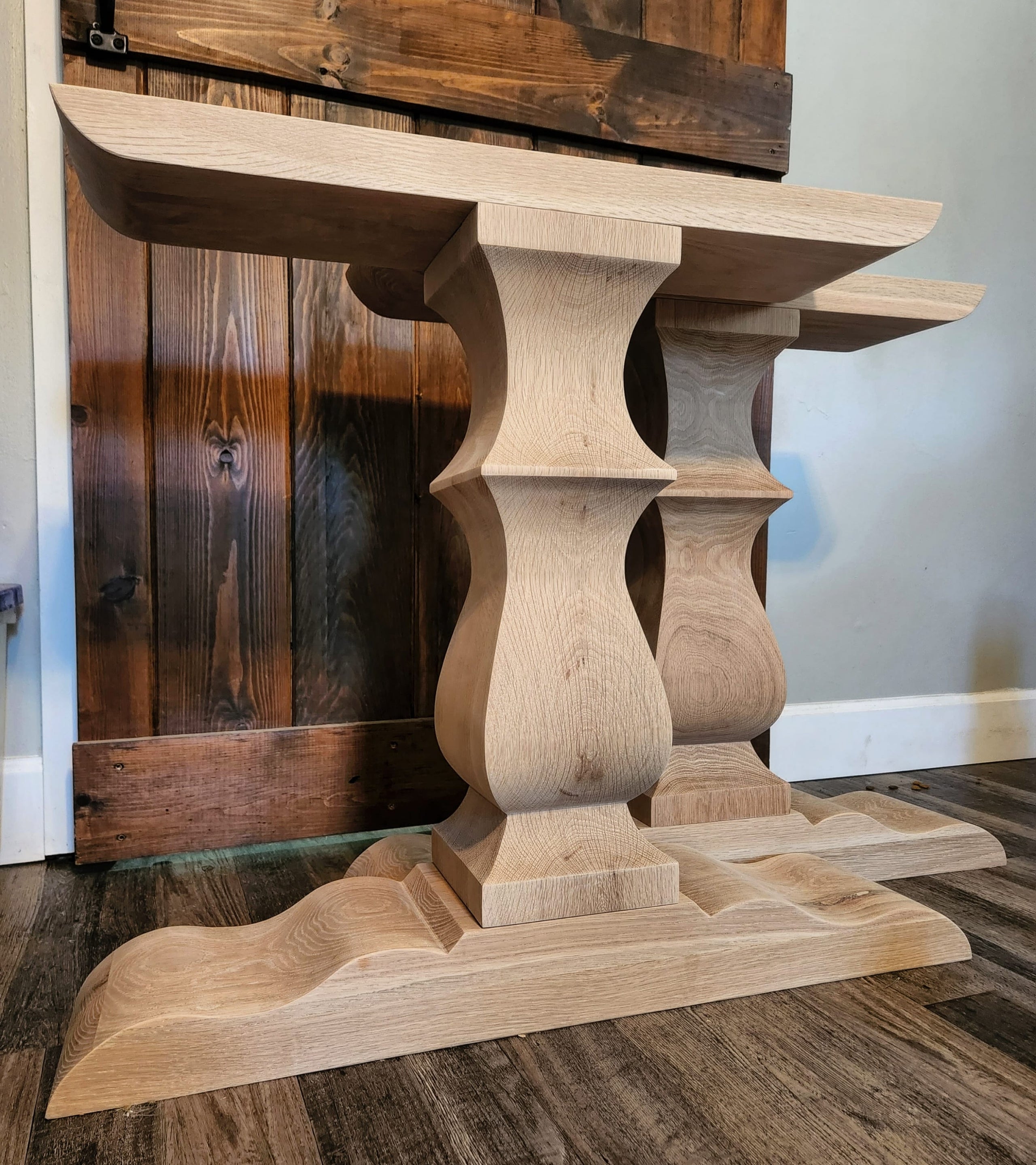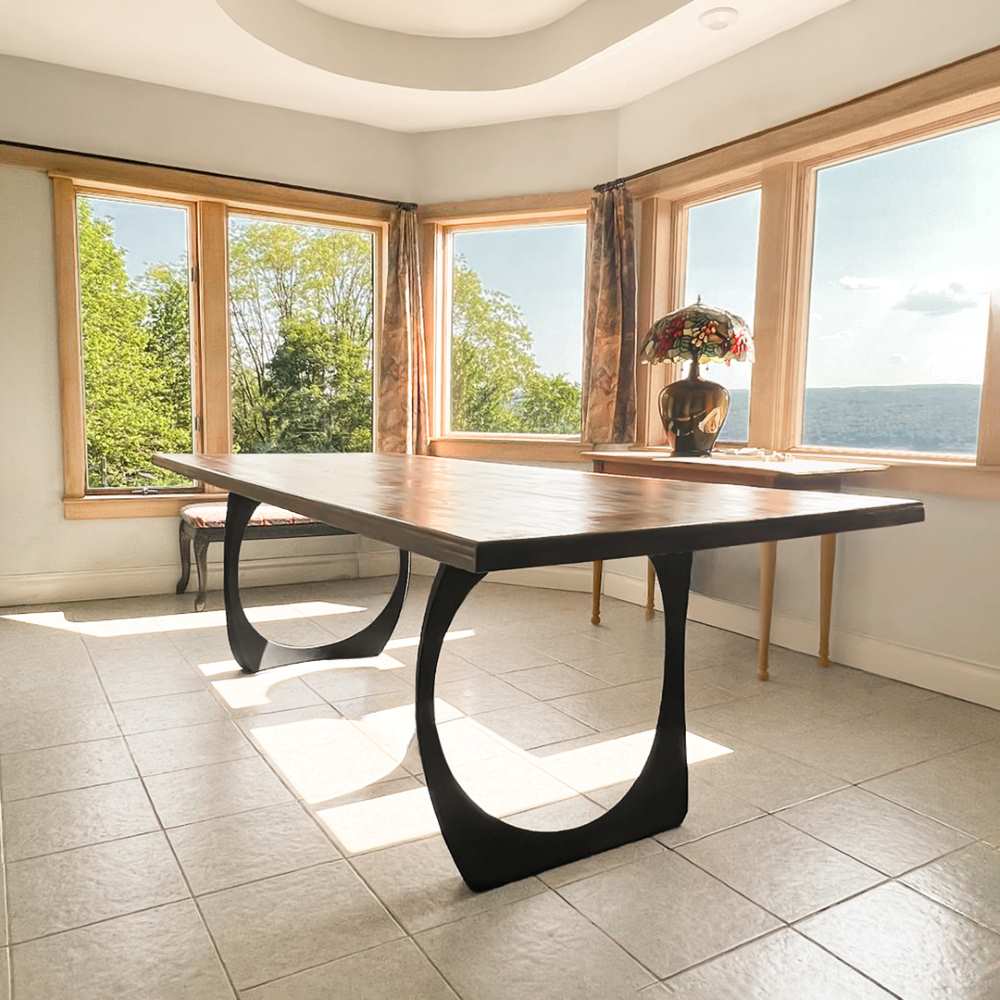Transform Your Dining Space with Stylish Dining Room Table Legs
Transform Your Dining Space with Stylish Dining Room Table Legs
Blog Article
From Typical to Modern: Locate the Perfect Dining-room Table Legs for Your Style
The selection of dining room table legs plays a crucial role in defining the general personality of your space, connecting the gap in between traditional workmanship and contemporary appearances. While timeless designs such as cabriole and transformed legs evoke a sense of timeless class, modern designs like barrette and geometric choices present a possibility for striking visual interest. Examining the best balance in between these designs calls for a nuanced understanding of your existing decoration and personal taste. As you think about these aspects, the inquiry remains: how can you flawlessly incorporate these varied leg styles to develop an unified eating experience?
Comprehending Table Leg Styles
The range of eating room table leg designs can dramatically affect both the aesthetic appeals and performance of the room. Each leg design contributes unique useful functions and aesthetic aspects, accommodating diverse style preferences and usage needs. Comprehending these styles is essential for choosing the right table that lines up with your overall interior decoration vision.
As an example, tapered legs supply a clean, timeless appearance that can improve an area's sophistication, while stand bases give security and take full advantage of legroom, making them suitable for smaller areas. Hairpin legs, a characteristic of mid-century modern-day design, introduce a commercial panache, permitting for an airy, open feeling. Trestle legs evoke rustic appeal, providing robust support and a sense of timelessness.
Wood legs can bring warmth and texture, whereas steel options typically communicate a sleek, modern vibe. Eventually, comprehending table leg styles is vital for developing a natural eating location that shows individual design while guaranteeing practicality and convenience.
Conventional Table Leg Options
When choosing dining-room table legs, standard choices usually symbolize ageless style and workmanship. These designs reflect a rich heritage and a dedication to high quality, making them perfect for those that value traditional looks.
One of one of the most iconic standard leg styles is the cabriole leg, defined by its graceful rounded form. This design commonly features attractive carvings and is most generally found in Queen Anne and Chippendale furniture. An additional preferred choice is the turned leg, which flaunts a series of smooth, rounded forms that offer a classic appearance while maintaining stability.
Furthermore, the straight leg, while simple, provides a unadorned and sturdy structure that can mix effortlessly with a variety of tabletop styles. For those drawn to ornate detailing, claw-and-ball feet legs evoke a sense of splendour and can work as a spectacular centerpiece in any type of eating room.
Finally, stand bases, although not strictly legs, offer a different typical choice that enables enough legroom and can be perfectly carved. Each of these typical leg styles adds to the general atmosphere of useful site an eating room, weding function with visual charm.

Modern Table Leg Designs
Modern table leg layouts provide a diverse variety of designs that highlight ingenious materials and tidy lines. These layouts often prioritize functionality while serving as striking prime focus within a dining space. Minimalist looks prevail, with legs crafted from materials such as metal, glass, and engineered wood, which add to a contemporary and ventilated feel.
One prominent design is the hairpin leg, characterized by its slender, tapered framework that gives security without frustrating the table top (dining room table legs). This design is typically discovered in mid-century modern furnishings and can effortlessly enhance numerous table forms. One more pattern is making use of geometric shapes, where legs may take on unbalanced or angular types, adding aesthetic passion and a touch of creativity

Mixing Designs for Unique Rooms
Usually, homeowners seek to develop unique dining rooms that show their individual style by blending numerous design aspects. This approach enables for the unification of varied appearances, resulting in an unified yet distinctive setting. As an example, matching a rustic wooden table with smooth, modern metal legs can produce a captivating contrast that boosts the room's overall allure.
Additionally, integrating vintage table legs with contemporary tabletops can evoke a feeling of background while maintaining a contemporary sensibility. Such combinations not only display individual preference however also encourage creativity, allowing home owners to curate a room that feels both individual and inviting.
Shade plays a critical role in this mixing procedure; choosing table legs that enhance or comparison with the existing color pattern can enhance visual passion. Whitewashed legs can soften the daring of a dark table surface, producing a well balanced aesthetic.
Tips for Choosing the Right Legs
Selecting the right table legs is crucial for achieving both capability and visual appeal in your eating space. Begin by taking into consideration the general style of your room. Typical settings benefit from legs that include complex makings or turned designs, while modern areas might require sleek, minimalist styles.
Next, assess the elevation and stability of the legs. dining room table legs. Common table range in between 28 to 30 inches in elevation, so ensure the anonymous legs match this measurement for convenience. Furthermore, robust products, such as wood or steel, can enhance security and long life
Assess the leg form as well-- options include straight, tapered, or stand layouts. Straight legs provide a traditional appearance, while tapered legs can add a touch of sophistication. Pedestal bases supply sufficient legroom and are optimal for smaller sized rooms.
Final Thought
In recap, selecting the perfect dining-room table legs requires careful consideration of both typical and contemporary designs. Traditional alternatives such as cabriole and turned legs provide classic elegance, while modern layouts like hairpin and geometric forms give a contemporary touch. By integrating leg design, elevation, and product with the overall decoration, a natural and inviting ambience can be accomplished. Inevitably, the picked table legs ought to reflect the preferred aesthetic, enhancing the dining experience within the area.
The variety of eating room table leg styles can significantly influence both the aesthetic appeals and functionality of the room. Inevitably, understanding table leg styles is necessary for producing a natural eating area that mirrors personal design while making sure practicality and click for info comfort.One of the most renowned standard leg designs is the cabriole leg, identified by its stylish curved form. Straight legs use a traditional appearance, while conical legs can include a touch of sophistication.In summary, picking the suitable dining area table legs needs mindful consideration of both modern-day and traditional designs.
Report this page